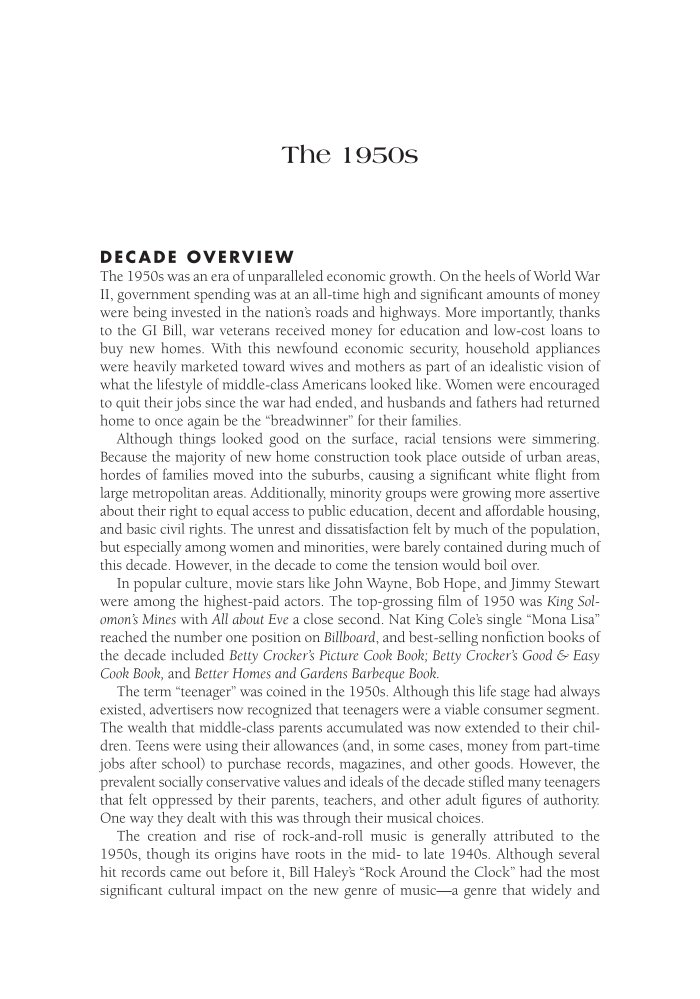The 1950s DECADE OVERVIEW The 1950s was an era of unparalleled economic growth. On the heels of World War II, government spending was at an all-time high and significant amounts of money were being invested in the nation’s roads and highways. More importantly, thanks to the GI Bill, war veterans received money for education and low-cost loans to buy new homes. With this newfound economic security, household appliances were heavily marketed toward wives and mothers as part of an idealistic vision of what the lifestyle of middle-class Americans looked like. Women were encouraged to quit their jobs since the war had ended, and husbands and fathers had returned home to once again be the “breadwinner” for their families. Although things looked good on the surface, racial tensions were simmering. Because the majority of new home construction took place outside of urban areas, hordes of families moved into the suburbs, causing a significant white flight from large metropolitan areas. Additionally, minority groups were growing more assertive about their right to equal access to public education, decent and affordable housing, and basic civil rights. The unrest and dissatisfaction felt by much of the population, but especially among women and minorities, were barely contained during much of this decade. However, in the decade to come the tension would boil over. In popular culture, movie stars like John Wayne, Bob Hope, and Jimmy Stewart were among the highest-paid actors. The top-grossing film of 1950 was King Sol- omon’s Mines with All about Eve a close second. Nat King Cole’s single “Mona Lisa” reached the number one position on Billboard, and best-selling nonfiction books of the decade included Betty Crocker’s Picture Cook Book Betty Crocker’s Good & Easy Cook Book, and Better Homes and Gardens Barbeque Book. The term “teenager” was coined in the 1950s. Although this life stage had always existed, advertisers now recognized that teenagers were a viable consumer segment. The wealth that middle-class parents accumulated was now extended to their chil- dren. Teens were using their allowances (and, in some cases, money from part-time jobs after school) to purchase records, magazines, and other goods. However, the prevalent socially conservative values and ideals of the decade stifled many teenagers that felt oppressed by their parents, teachers, and other adult figures of authority. One way they dealt with this was through their musical choices. The creation and rise of rock-and-roll music is generally attributed to the 1950s, though its origins have roots in the mid- to late 1940s. Although several hit records came out before it, Bill Haley’s “Rock Around the Clock” had the most significant cultural impact on the new genre of music—a genre that widely and
Document Details My Account Print multiple pages
Print
You have printed 0 times in the last 24 hours.
Your print count will reset on at .
You may print 0 more time(s) before then.
You may print a maximum of 0 pages at a time.




















































































































































































































































































































































































